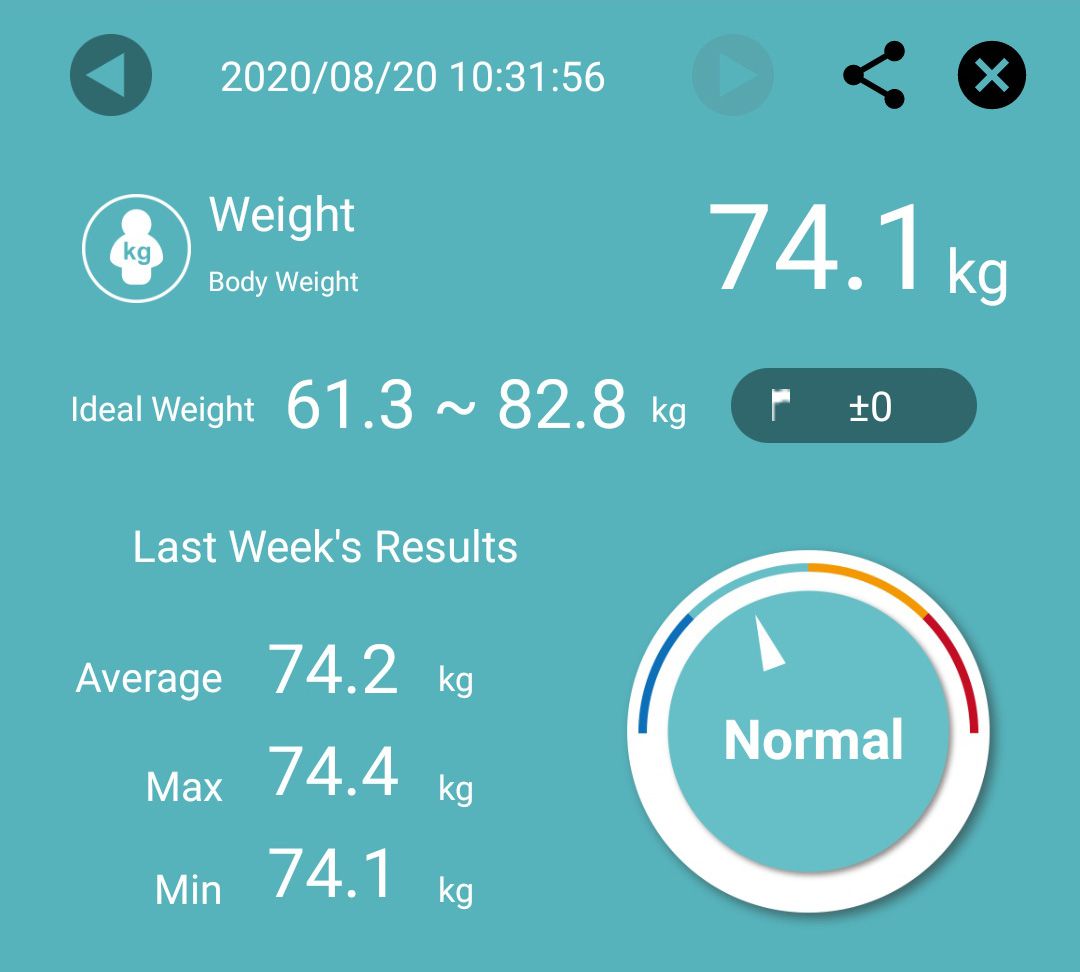-
How is "Ideal Weight" calculated?
BMI is calculated using the following formula: weight (kg) / height (m2). The WHO divides BMI into four different categories according to risk of obesity-related disease.
Source: World Health Organization (WHO)Low Normal High Very High <18.5 18.5≦BMI<25 25≦BMI<30 BMI≧30
The example below is for a person standing at 182 cm. His ideal (normal) weight range (as defined by BMI) is 61.3~82.8 kg, and because his current weight of 74.1 kg is within this range, no weight increase or decrease is recommended.
Because BMI only takes into account total weight and does not distinguish between muscle or fat, highly muscular individuals may be "overweight" by BMI standards, but this in of itself can be perfectly healthy, if the source of weight is muscle, and not fat. -
Normal Body Fat Percentages
Gender Age Low Normal High Very High Male 10~33 5.0%~8.5% 8.6%~19.3% 19.4%~25.0% 25.1%~50.0% 34~49 5.0%~11.7% 11.8%~22.5% 22.6%~27.6% 27.7%~50.0% 50~80 5.0%~13.7% 13.8%~24.5% 24.6%~30.2% 30.3%~50.0% Female 10~33 5.0%~20.8% 20.9%~32.5% 32.6%~38.2% 38.3%~50.0% 34~49 5.0%~23.4% 23.5%~35.1% 35.2%~40.8% 40.9%~50.0% 50~80 5.0%~24.4% 24.5%~36.1% 36.2%~41.8% 41.9%~50.0%
Source: Combination of age and ranges from "Hoeger WWK & Hoeger SA (1994). Principles & Labs for Physical Fitness and Wellness", and the "American Council on Exercise"
